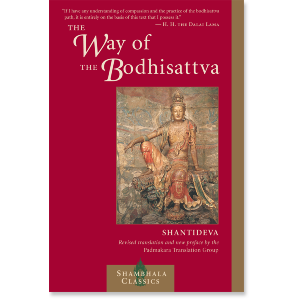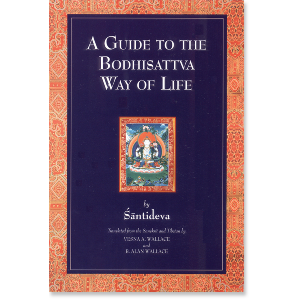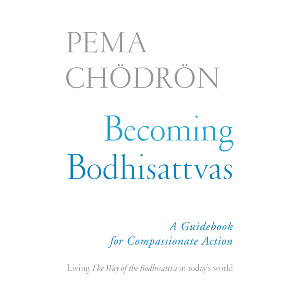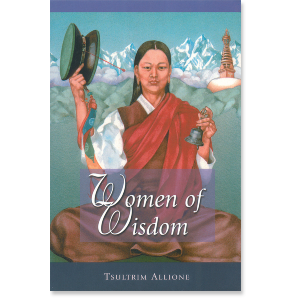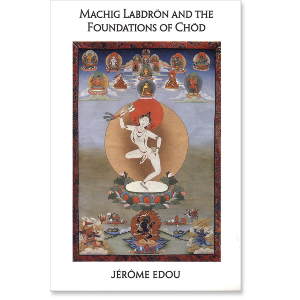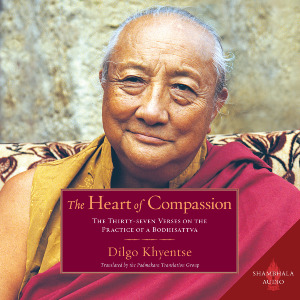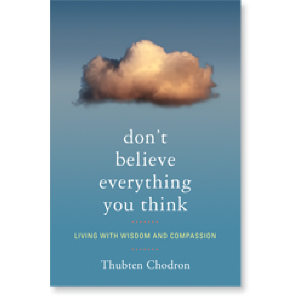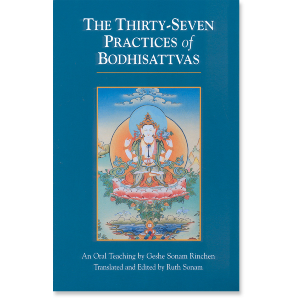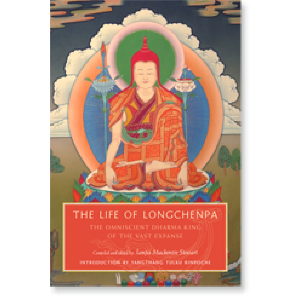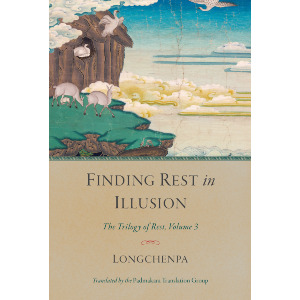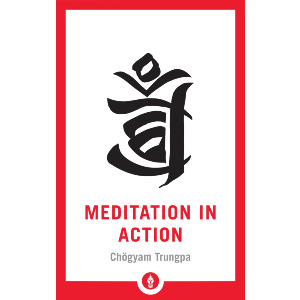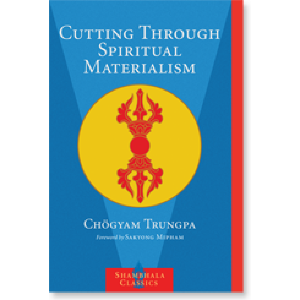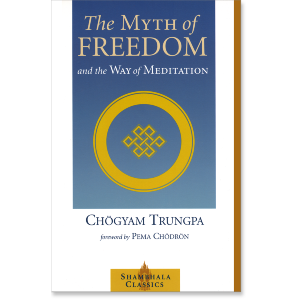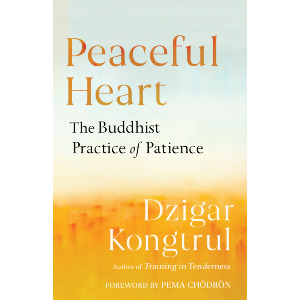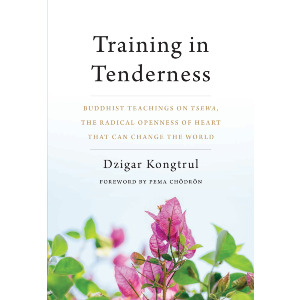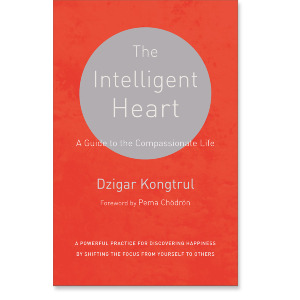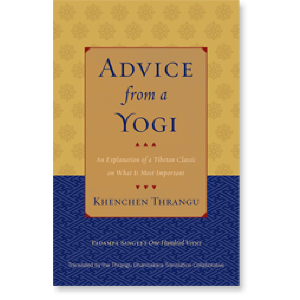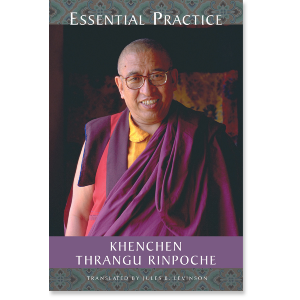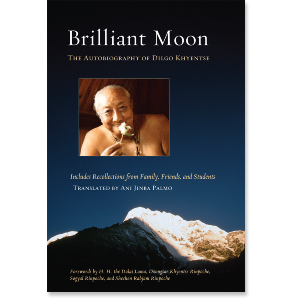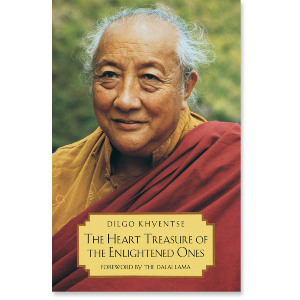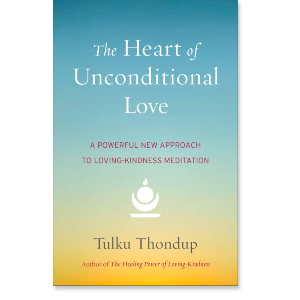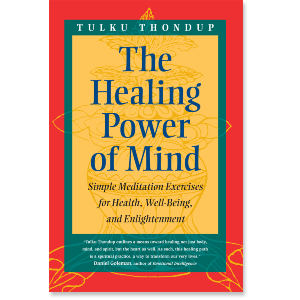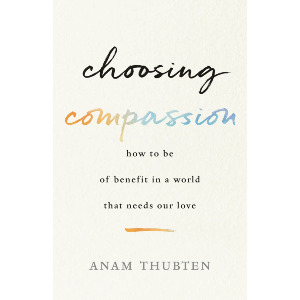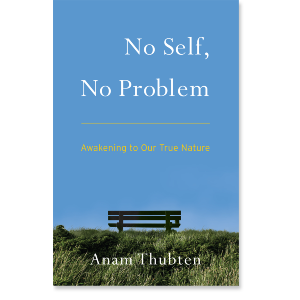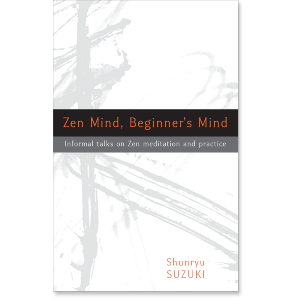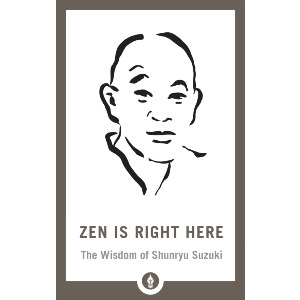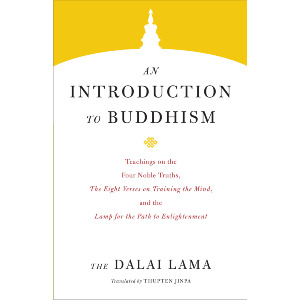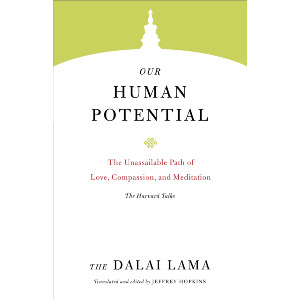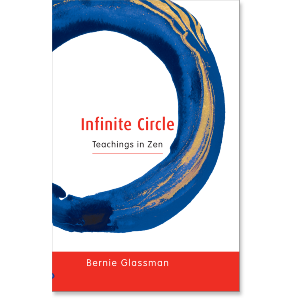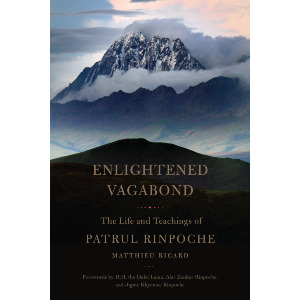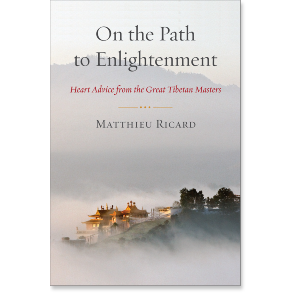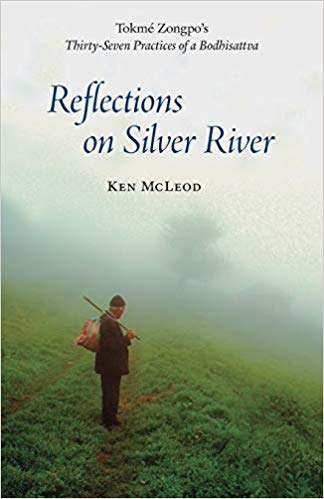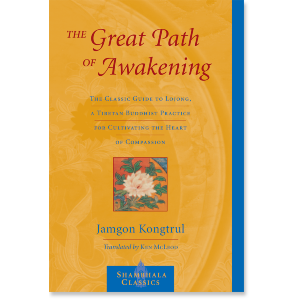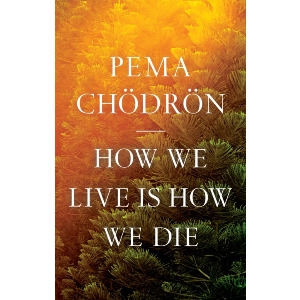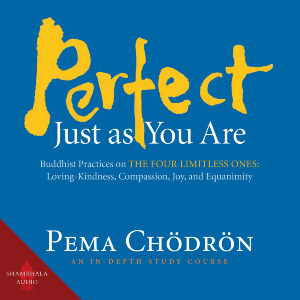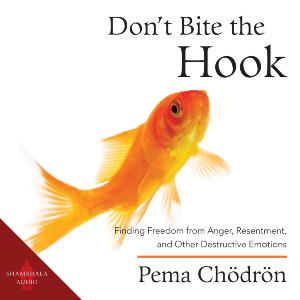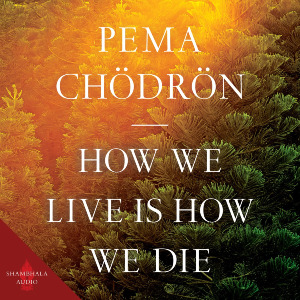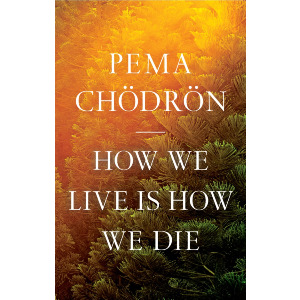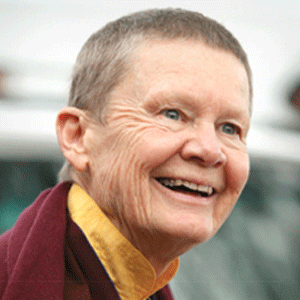 Pema Chödrön refers to many of her teachers and friends in her latest book Welcoming the Unwelcome. For fans of Ani Pema who might be less familiar with some of these figures but want to hear more from her main inspirations, teachers, and role models, this is for you! For those who listened to the audiobook of Welcoming, hearing the narrator and actress Claire Foy pronounce so many masters of Buddhism was a thrill.
Pema Chödrön refers to many of her teachers and friends in her latest book Welcoming the Unwelcome. For fans of Ani Pema who might be less familiar with some of these figures but want to hear more from her main inspirations, teachers, and role models, this is for you! For those who listened to the audiobook of Welcoming, hearing the narrator and actress Claire Foy pronounce so many masters of Buddhism was a thrill.
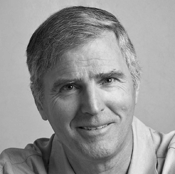

Ken McLeod
Ken McLeod began his studies in 1970 under the tutelage of the late Kalu Rinpoche. After completing two three-year retreats, he was appointed to teach in Los Angeles. In 1990, he established Unfettered Mind, through which he teaches classes and retreats and sees people individually. In recent years, he has worked as a corporate consultant, advising senior executives at the highest levels of corporate America. With degrees in mathematics, training in martial arts, and years of experience in traditional Tibetan Buddhism, McLeod is uniquely able to bridge the gap between contemporary life and traditional approaches to spiritual practice.
Ken McLeod
Ken McLeod began his studies in 1970 under the tutelage of the late Kalu Rinpoche. After completing two three-year retreats, he was appointed to teach in Los Angeles. In 1990, he established Unfettered Mind, through which he teaches classes and retreats and sees people individually. In recent years, he has worked as a corporate consultant, advising senior executives at the highest levels of corporate America. With degrees in mathematics, training in martial arts, and years of experience in traditional Tibetan Buddhism, McLeod is uniquely able to bridge the gap between contemporary life and traditional approaches to spiritual practice.
-
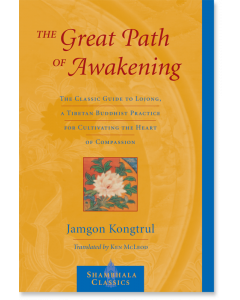 The Great Path of Awakening$16.95- Paperback
The Great Path of Awakening$16.95- PaperbackBy Jamgon Kongtrul Lodro Taye
Translated by Ken McLeod
GUIDES
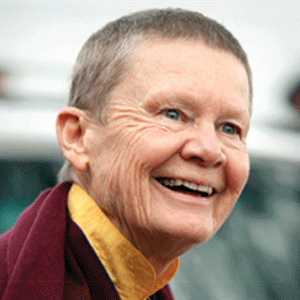
The Teachers of Pema Chodron: A Reader's Guide
Buddhist Teachers of Pema Chodron from Long Ago
Some of the most beloved figures and their writings come from the early history of Buddhism in India and Tibet.
Shantideva
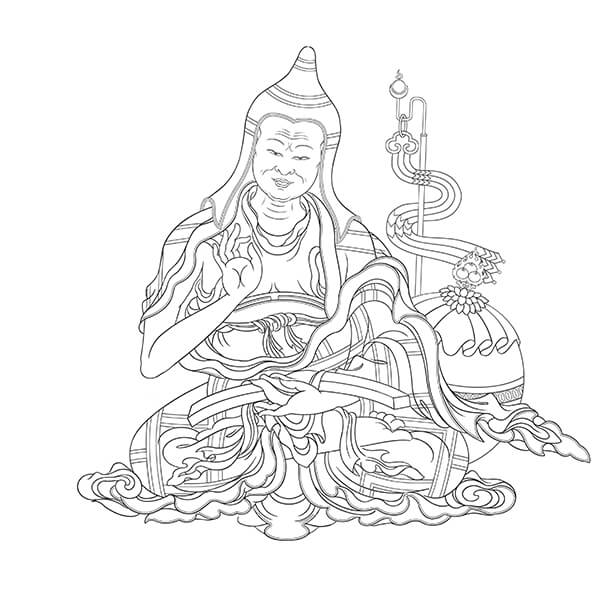
She writes, “I often quote Shantideva, a great Buddhist sage from the eighth century whose writings are widely taught to this day. His advice to keep ourselves from escalating is to ‘remain like a log of wood.’ He lists many provocative situations and then recommends that we don’t act or speak when they come up. Often people interpret this advice as repression. But the point is that remaining like a log interrupts the momentum of our habitual reactions, which usually make things worse. Instead of reacting, we rest with the moving, heightened energy that has arisen. We let ourselves just experience what we’re experiencing. This slows down the process and allows some space to open up. It gives us a chance to discern our inner process and then do something different.”
The best way to explore this is reading the original, then Pema’s commentary Becoming Bodhisattvas, and then looking into it further through our Reader’s Guide on The Way of the Bodhisattva.
Machik Labdron
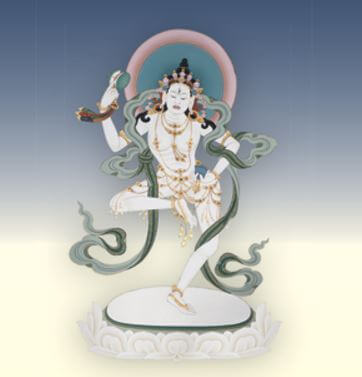
“Machik Labdron, a great Tibetan practitioner who lived in the eleventh and twelfth centuries, had a list of radical suggestions for getting unstuck from our ego-clinging. The first of these is ‘Reveal your hidden faults.’ Instead of concealing our flaws and being defensive when they are exposed, she counseled us to be open about them.”
We have a dedicated page on Chod that presents the dozens of books, articles, and videos on Machik and the practice of Chod. Some of these are pretty advanced, but two great places to start are Machig Labdron and the Foundations of Chod and Tsultrim Allione’s Women of Wisdom.
Thogme Zangpo
Thogme Zangpo, the beloved fourteenth-century Tibetan master is mentioned a dozen times in Welcoming the Unwelcome (and mentioned in over 120 other Shambhala books), and Ani Pema devotes an entire online course to his classic work called The Heart of the Matter.
She says, “In the fourteenth century, the Tibetan sage Thogme Zangpo wrote The Thirty-Seven Practices of a Bodhisattva, which is still one of the most quoted and beloved poems in Buddhist literature. Each of its stanzas gives advice on how to live like a bodhisattva, a person whose highest aspiration in life is to wake up for the benefit of all living beings. In one verse, he poignantly describes why a comfort-oriented lifestyle is unsatisfactory. Happiness ‘disappears in a moment,’ he says, ‘like a dewdrop on a blade of grass.’ Basing your comfort on things that don’t last is a futile strategy for living. Even when you get something you’ve always wanted, the pleasure you get lasts for such a short time.”
Thogme Zangpo’s Thirty-Seven Practices is a classic and translations of it appear in all the contemporary explanations on it. In addition to Ken McLeod’s translation that she mentions, there is an extraordinary explanation of this work by Dilgo Khyentse Rinpoche (more on him below) called Heart of Compassion, available in both book and audio. There are also other excellent explorations of this work from Thubten Chodron and Geshe Sonam Rinchen.
For all the books, videos, and articles on this work, see our dedicated page to the 37 Practices of the Bodhisattva.
Longchenpa
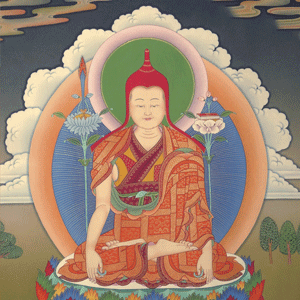 The fourteenth-century master Longchenpa, or Longchen Rabjam, is one of the pillars of Tibetan Buddhism.
The fourteenth-century master Longchenpa, or Longchen Rabjam, is one of the pillars of Tibetan Buddhism.
“The great fourteenth-century yogi Longchenpa said that how we label things is how they appear to be. I decided to experiment with this teaching and see how it applied to my obsession with cleanliness."
Here is the full story from the audiobook read by Claire Foy:
Much of Longchenpa’s writings are for those who have been immersed in Tibetan Buddhist practice and study for a long time, but two excellent starting places are his biography and the first volume of his “Trilogy of Rest”.
The Direct Teachers of Pema Chodron
Chögyam Trungpa Rinpoche

“Trungpa Rinpoche said that the way to arouse bodhichitta was to “begin with a broken heart.” Protecting ourselves from pain—our own and that of others—has never worked. Everybody wants to be free from their suffering, but the majority of us go about it in ways that only make things worse. Shielding ourselves from the vulnerability of all living beings—which includes our own vulnerability—cuts us off from the full experience of life. Our world shrinks. When our main goals are to gain comfort and avoid discomfort, we begin to feel disconnected from, and even threatened by, others. We enclose ourselves in a mesh of fear. And when many people and countries engage in this kind of approach, the result is a messy global situation with lots of pain and conflict.”
The best place to start exploring his teaching is our Reader’s Guide to his works, which include general introductions to meditation, mindfulness, the various traditions of Buddhism, art & poetry, the secular Shambhala teachings, death & dying, and more.
Dzigar Kongtrul Rinpoche
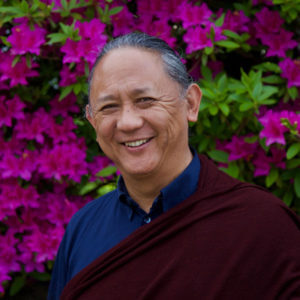
Dzigar Kongtrul Rinpoche is Ani Pema’s current teacher, and she spends much of her time in retreat under his direction. He is based in Colorado, but teaches all over the world.
Unsurprisingly he appears in many of her books, especially the more recent ones. In Welcoming, she writes, “if we get to a point where hardships bring out the best in us, we will be of great help to those in whom hardships bring out the worst. If even a small number of people become peaceful warriors in this way, that group will be able to help many others just by their example. Dzigar Kongtrul Rinpoche is an advocate of this kind of courageous and practical realism. He urges people to train in becoming ‘modern-day bodhisattvas,’ or simply ‘MDBs.’ His students have even designed an MDB baseball cap to inspire themselves and others to move through the world with an altruistic, resilient heart. This work is based on getting to know how things really are and conducting ourselves bravely and creatively within that framework.”
Here she is discussing his recent book, Training in Tenderness.
Khenchen Thrangu Rinpoche
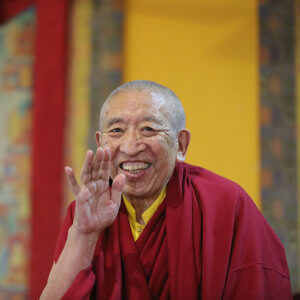
We recently published this Reader’s Guide to the works of Thrangu Rinpoche, which will give you great ideas on where to get started with this incredible teacher. Here is Pema Chödron telling a story about him in Welcoming the Unwelcome (audiobook read by Claire Foy):
$18.95 - Paperback
By: Khenchen Thrangu & Thrangu Dharmakara Translation Collaborative
Dilgo Khyentse Rinpoche
Dilgo Khyentse Rinpoche, who passed away in 1991, was a teacher to an entire generation of lamas, monastics, and lay people from His Holiness the Dalai Lama to nomads in the wilds of Tibet. He was a very important teacher to both Trungpa Rinpoche and Dzigar Kongtrul Rinpoche.
Ani Pema relates, “Trungpa Rinpoche told this story about how he once was sitting in a garden with Dilgo Khyentse Rinpoche, one of his most important teachers. They were just enjoying their time together in the beautiful setting, hardly saying anything, simply happy to be there with each other. Then Khyentse Rinpoche pointed and said, ‘They call that a “tree,”’ and both of them roared with laughter. For me this is a wonderful illustration of the freedom and enjoyment that await us when we stop being fooled by our labels. The two enlightened teachers thought it was a riot that this complex, changing phenomenon, with all its leaves and bark and fragrance, could be thought of merely as a ‘tree.’ As our labels loosen their grip on us, we too will start to experience our world in this lighter, more magical way.”
The story of Khyentse Rinpoche’s life is an amazing tale of dedication, disciple, and devotion and is beautifully told in Brilliant Moon, a combined autobiography and biography, with accounts of him from across the Buddhist world including, Her Majesty the Royal Grandmother of Bhutan, and many of the great masters of the last century. We also have a Reader’s Guide to his works, which are some of the most beloved works we have in print.
Here is Richard Gere, the Dalai Lama, and Mattheu Ricard reflecting on this extraordinary teacher:
$39.95 - Paperback
By: H.H. the Fourteenth Dalai Lama & Dilgo Khyentse Rinpoche & Ani Jinba Palmo & Shechen Rabjam
The Heart Treasure of the Enlightened Ones
$24.95 - Paperback
By: Dilgo Khyentse Rinpoche & Padmakara Translation Group & Patrul Rinpoche
More Teachers and Friends
Tulku Thondup
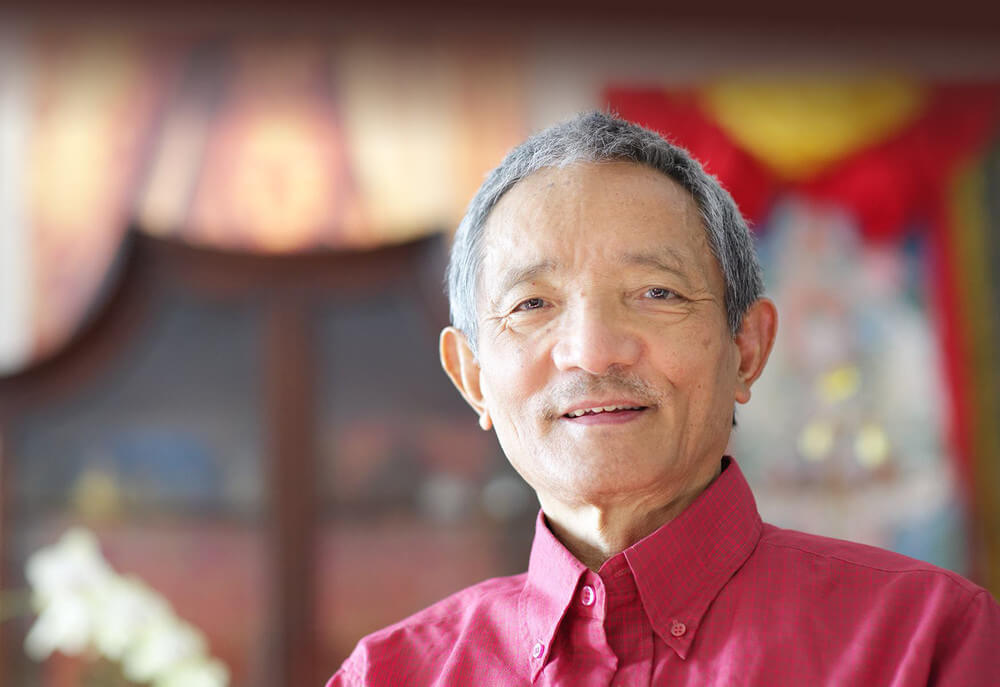
“How do we adopt this counterintuitive attitude when our emotions and neuroses hit us hard, in the painful, nontheoretical way that they do? I have learned a few effective methods, two of which I will share here.
The first method is based on a teaching by Tulku Thondup Rinpoche. When any unwanted feeling comes up, the first step is to feel it as fully as you can at the present moment. In other words, hold the rawness of vulnerability in your heart. Breathe with it, allow it to touch you, to inhabit you—open to it as fully as you currently can. Then make that feeling even stronger, even more intense. Do this in any way that works for you—in any way that makes the feeling stronger and more solid. Do this until the feeling becomes so heavy you could hold it in your hand. At that point, grab the feeling. And then just let it go. Let it float where it will, like a balloon, anywhere in the vast realm of empty space. Let it float out and out into the universe, dispersing into smaller and smaller particles, which become inconceivably tiny and distant.”
Tulku Thondup’s The Heart of Unconditional Loveand The Healing Power of Mind are two excellent starting places to explore Tulku Rinpoche’s extraordinary gift for opening our hearts.
Anam Thubten
Anam Thubten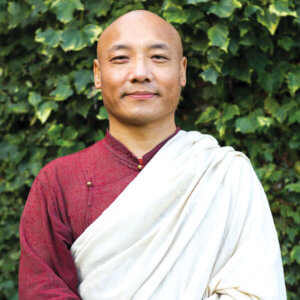
Ani Pema writes, “Anam Thubten emphasizes that this brave acknowledgment of our ‘flaws’ is not about indulging in feelings of shame or guilt. It is, instead, about ‘not hiding anything from one’s awareness.’ Instead of reacting in one way or another, we can simply choose not to hide anything from our own mind. We can regard all that we observe simply as karmic seeds ripening. Whatever arises in our mind and heart is just our current experience, nothing more or less. Even our good and bad qualities are temporary and insubstantial, not ultimate proofs of our worthiness or unworthiness. They are not inherent to our fundamental nature of basic goodness; they are simply what is. If we learn to work with our experiences in this way, then instead of succumbing to the pull of our old habits, we can stay present with them until they calm down of their own accord.”
His books include No Self, No Problem, Embracing Each Moment, and his latest, Choosing Compassion.
Suzuki Roshi
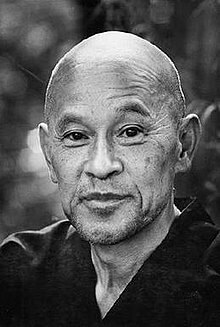
Ani Pema shares this in Welcoming: “As the Zen teacher Suzuki Roshi famously said, ‘In the beginner’s mind, there are many possibilities, but in the expert’s, there are few.’”
This quote comes from the best selling Zen book of all time, Zen Mind, Beginner's Mind. Many other anecdotes and sayings of this remarkable teacher can be found in Zen is Right Here.
His Holiness the Dalai Lama
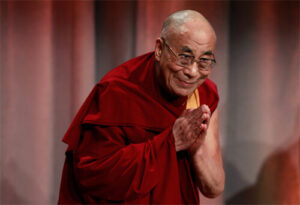
“When His Holiness the Dalai Lama started meeting with Buddhist teachers from the West, they would tell him how their students often expressed self-denigration. Even the teachers often had negative views of themselves. For the Dalai Lama, at first, these words just didn’t compute. Having a bad self-image was completely alien to how he saw himself and others. It was so far away from the open-ended and basically good nature that he knew everyone possessed. It didn’t make sense that people could be so hard on themselves, so judgmental—even to the point of self-hatred.”
Ani Pema goes on to unpack this and show the path forward to the reader.
Here is a Reader’s Guide to over two dozen of the Dalai Lama’s works, including The Core Teachings of the Dalai Lama series.
Bernie Glassman
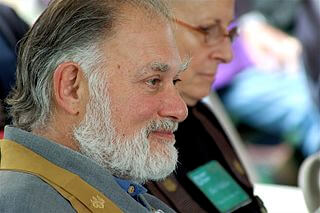
From Kanzeon Zen Center via Wikipedia
Pema writes, “Roshi Bernie Glassman, who spent decades working with homeless people in Yonkers, New York, said ‘I don’t really believe there’s going to be an end to homelessness, but I go in every day as if it’s possible. And then I work individual by individual.’”
Glassman, who passed away in 2019. was a huge figure in the American Buddhist world. He was known for his iconoclastic style and enormous heart, dedicating his life to helping others with cigar perched firmly in his mouth, whether in his collaboration with Jeff Bridges or helping homeless on the streets.
Here are two of his books
Instructions to the Cook describes the innovative business model Roshi Bernie Glassman developed to revitalize a poverty-stricken section of Yonkers, New York. Using his own story as a base, Glassman shows how social engagement can be used as a spiritual practice to promote both personal and societal transformation.
His book Infinite Circle covers three core Zen concepts and how they relate to his community development organizations and the Zen Peacemaker Order.
Matthieu Ricard
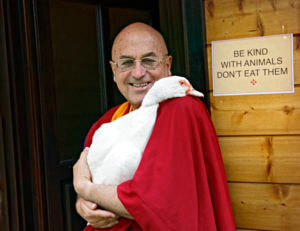
Ani Pema, when discussing the practice of tonglen, says, “Matthieu Ricard, the well-known Buddhist monk and author, was once being tested for compassion by being hooked up to one of those big machines that records all your brain activity. He began by visualizing himself sending rays of healing light to those who are suffering, but the scientists wanted him instead to focus on breathing the suffering in. For that period, he saturated himself. He had just visited an orphanage in Romania where it was so sad to see how the children were being treated. And he’d also recently been in Tibet after an earthquake. So he had a lot of material, which he kept breathing in and breathing in.
From this experience, he said he learned that a person can only take so much. He found that taking on suffering had to be balanced with love and kindness, with the completeness of life. I think that this example illustrates how he approached the excessive risk zone, and realized that if you breathe in the pain, you also have to send out the love. There’s a sense of connecting with both beauty and tragedy—with the delightfulness and upliftedness of life, and with the degraded and cruel part of life.”
He has written books on animal ethics, collections of stories and wisdom from many great masters, and translations of some very important autobiography and biographies.
Ken McLeod
In Welcoming the Unwelcome, Ani Pema wrote, "my friend Ken McLeod wrote Reflections on Silver River, a book that has deepened my understanding of the bodhisattva path considerably".
This book is a translation of and commentary on the 37 Practices of the Bodhisattva, by Thogme Zangpo (see above). She often points to McLeod's book as a superb in her teachings.
He has also translated an incredible text: The Great Path of Awakening: The Classic Guide to Lojong, a Tibetan Buddhist Practice for Cultivating the Heart of Compassion. Here he is discussing that work:
In Closing
We hope this article gives you some great ways to go deeper with many of Pema Chödrön’s main inspirations.



